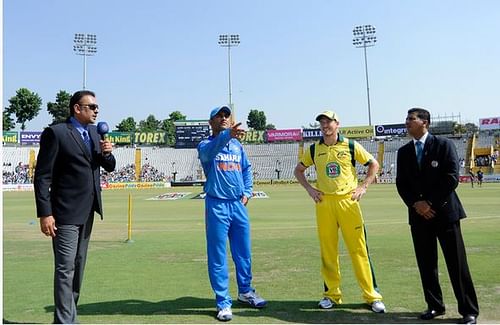
India vs Australia 2013: Five factors that will impact the 4th ODI
Only T20I: Australia 201/7; India 202/4 - India won by 6 wickets
1st ODI: Australia 304/8; India 232 – Australia won by 72 runs
2nd ODI: Australia 359/5; India 362/1 – India won by 9 wickets
3rd ODI: India 303/9; Australia 304/6 – Australia won by 4 wickets
The India – Australia limited overs series is well and truly underway and from the above scores, it’s been a complete run feast. The batsman has made merry of the brilliant batting conditions while the bowlers have had quite a nightmare (not alluding to Ishant Sharma here).
India won the lone T20 while Australia leads the ODI series 2-1. It’s been a much closer series than one predicted. After a forgetful Ashes, everyone expected the Australians to roll over like nine pins against a very strong Indian side but to the dismay of the experts, the George Bailey-led Aussie team have gone shoulder-to-shoulder against the Indians which has raised quite a few eyebrows with their performances.
There are a few factors that have clicked in favour of the Australians though. Firstly, their ODI team is starkly different from that of their Test outfit and it has worked well for them because most of the members of this side weren’t a part of the Ashes humiliation.
In fact, this team actually won the ODI series in England that followed the Ashes and is currently ranked number two behind India in the ICC ODI ratings. So, it’s hardly a surprise to see them doing so well against India.
The Aussies may have the lead in the seven match series but to write off the Indians will be a huge mistake. Not only they are playing at home, but also they are the current chart toppers of the ICC ODI ratings.
So as the battle between the two top ranked sides moves to Ranchi, let’s take a look at the five factors that will impact the outcome of the game.
The Toss

Although, the toss doesn’t make much difference on such placid tracks, this series the toss has played quite an important role. With the games starting at 1:30 in the afternoon, there’s hardly any help for the faster men but after the sunset, under the lights, the conditions tend to change.
The toss also affects the team compositions and their way of approaching the game. India is a batting heavy team and always looks to chase. Their batting is their strength and their batsmen, right now, feel that they are capable of chasing any target. Moreover, India prefers chasing to veil the weaknesses of their wafer-thin bowling attack.
And that’s where Australia changed the game in the last ODI. George Bailey won the toss and elected to field first letting India set a target so that Australia can attack India’s weakest link. Although India did a good job by reaching a 300 plus score, their bowling performance revealed their vulnerability when it comes to defending.
Another factor that the toss affects is the dew. With November setting in, the dew factor is bound to compel the captains to have a bowl first. Under lights, the dew adds a sheen on the wicket and stroke making becomes a lot easier. The wet outfield also doesn’t help because the spinners struggle to grip a moist seam.
Verdict – Win toss, bowl first